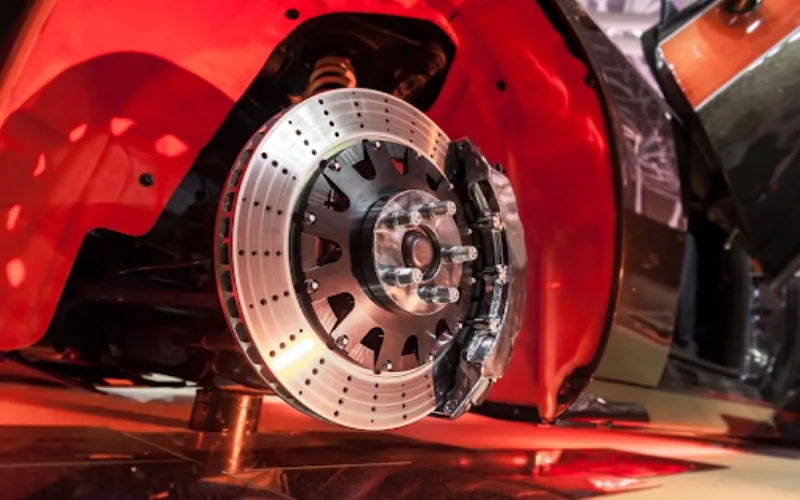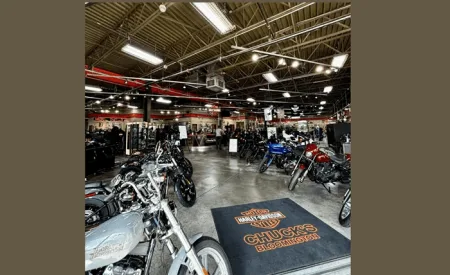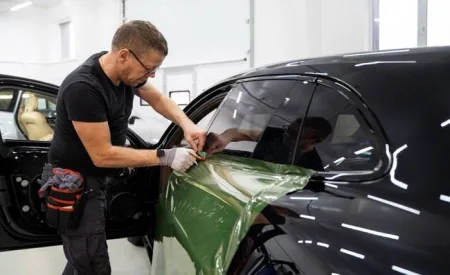As a responsible driver, it is your duty to ensure that your car is safe to drive down the road. For this reason, one of the most important safety features of the automobile is the brake. This brake system ensures that you can stop the vehicle instantly when needed. Now, imagine this system being less responsive or not responsive at all; it will lead to accidents.
Therefore, as a vigilant driver, you must ensure that the brake system is in the best condition. Here is a blog that talks about the signs that your brakes are unsafe. We will discuss the workings of the brake system, signs, and some DIY hacks for ensuring brake safety and, thereby, the safety of the people on the road. Besides, if you want to know how to maintain a car’s overall performance to avoid buying an alternative or used engine, do read this.
Working on the Braking System in a Car
A car’s braking system is an important part that ensures a safe and controlled slowdown or stop of the vehicle. It uses a hydraulic mechanism to operate, and the following important parts all work together:
- Brake Pedal: The vehicle’s operator depresses the brake pedal to begin braking. A mechanical linkage connects this pedal to a master cylinder.
- Master Cylinder: The hydraulic system’s beating heart is the master cylinder. The master cylinder’s piston is pushed when the stopping pedal is depressed, which increases the pressure of the hydraulics in the brake fluid.
- Brake Lines: A system of brake cables and hoses transmits hydraulic brake fluid, which is normally brake fluid, to each wheel.
- Brake Callipers (or Wheel Cylinders): The hydraulic pressure at each wheel activates the brake callipers (in disc brake systems) or wheel cylinders (in drum brake systems) at that wheel.
- Brake Shoes: In the case of disc brakes, the brake shoes are squeezed against the braking rotor (disc) by the callipers, creating friction that slows the wheel. Drum brakes force the brake shoes on the brake drum’s interior surface through the wheel cylinders.
- Friction Material: The friction material (typically comprised of combination materials) that the brake padding and shoes are supplied with causes resistance against the revolving wheels, eventually bringing them down.
- Brake Rotors (or Brake Drums): In plate braking systems, the rotors of the brake system are fastened to the wheel hubs and serve as the friction-producing surface for the brake pads. The braking drum performs a similar function to drum brakes.
- Anti-Lock Braking System (ABS): ABS is a common feature in contemporary vehicles. It works to keep wheels from locking up when braking forcefully, improving control and stability. ABS sensors regulate braking pressure based on wheel speed.
- Brake Fluid: The transmission of hydraulic pressure and lubrication of brake system components both depend on brake fluid. In order to survive the heat produced during braking, it has a boiling point that is elevated.
Signs that Your Brakes are Faulty
- Pulling to One Side: If your vehicle draws to one side when you brake, it can be because your brakes aren’t wearing evenly, your brake calliper is stuck, or your brake fluid isn’t being distributed evenly. As a result, the car may be difficult to control during braking, which is dangerous.
- Increased Stopping Distances: If you discover that it takes your car longer to stop than usual, it’s obvious that your brakes aren’t working as well as they should. This might be caused by a number of problems, such as brake system faults, brake fluid contamination, or worn brake pads.
- Dashboard Warning Light: Modern cars come with an instrument cluster warning light that turns on when there is a brake system issue. It’s critical to get your brakes checked right away if this light turns on.
- Brake Pedal Vibrations: Pulsations or vibrations in the brake pedal when applying the brakes may be an indication of warped brake rotors. Rotors that are warped might cause uneven braking and higher stopping distances, endangering safety.
- Grinding Sounds: If you hear a grinding noise during retardation, it probably means that your boscage pads have worn down fully and the essence backing is scraping against the boscage rotors. This is a severe issue that should be addressed immediately to prevent further damage.
- Squeaking, Squealing, or Screaming: Unusual high-pitched noises when applying the thickets can be a sign of worn boscage pads. Most boscage pads have built-in wear and tear pointers that produce these sounds to warn you that it’s time for relief.
- Dashboard Warning Light: Ultramodern vehicles are equipped with a dashboard warning light that illuminates when there is a problem with the boscage system. However, it’s essential to have your thickets audited as soon as possible If this light comes on.
DIY Hacks to Fix Car Brakes
Fixing car brakes is a critical job, and more often than not, you need to have a professional look it over. But there are a few things that can be done by the drivers themselves; a few of them are given below.
- Tightening of Different Brake Components: ensuring the tightness of all the bolts and nuts can help reduce rattle noises and other issues. This tightening can be done throughout the brake system.
- Checking Brake Fluid Oil: make sure that the brake fluid is always up to the recommended mark; if not, top it off with new brake fluid oil.
- Lubricating Brake Components: to ensure smooth operations, lubricate your brake calliper sides and contact points with high-temperature brake grease.
- Clean Brake Components: uneven wear and squeaking can be avoided with time-to-time cleaning. This can be done by removing the brakes and then rubbing the rotors and callipers with a light brush to get rid of rust and debris.
- Brake Pad Inspection: brake pads can be checked through wheel spokes; if they are thin in size below the recommended level, it’s time to change them.
Conclusion
In the context of this blog, we can say that to ensure that the brake system is functioning properly, we need to be vigilant and have an idea of the different components involved in the brake system. Keeping an eye out for signs of dysfunctionality or damage can help us avoid some dangerous situations.
To ensure that the brakes are healthy, it is suggested that you take your car in for a regular maintenance check. Also, brakes are crucial and should be touched with proper knowledge or by experts.
Used Engines is a place for all your used engine and transmission needs. They are a team of professionals trying to provide their clients with tested products to maintain high customer satisfaction.



